Saddle sores: how to prevent and treat them
Saddle sores can be an uncomfortable by-product of cycling - but with care and proper treatment they don't need to get in the way of a good ride
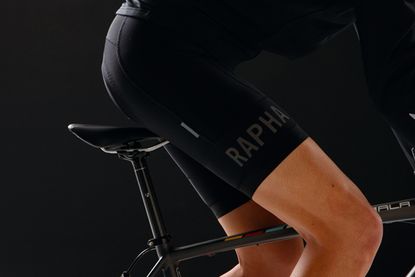

Most cyclists will suffer from saddle sores from time to time. At best, these are a minor inconvenience and a little bit uncomfortable. At worst, they can require medical intervention and antibiotics.
Here's the complete lowdown on everything you need to know...
What is a saddle sore?
Saddle sores vary between individuals. However, a general description would be a sore, often raised area of skin in the region that makes regular contact with the saddle.
Some saddle sores look a lot like spots and these are often caused by an infected hair follicle. Sores that look more like boils are usually larger and can be more painful. For some people, the main cause of pain is more likely to be abrasion caused by chafing.
How to avoid saddle sores
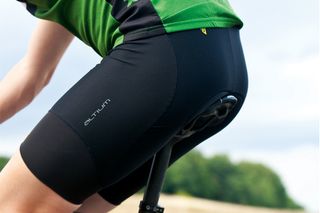
The best way to prevent saddle sores from becoming troublesome is to avoid them altogether - the best form of offence is a good defence, in this case.
Find a saddle that fits you
Saddle sores are often caused by chafing or irritation - and a saddle that suits you shouldn't really cause this at all.
Get The Leadout Newsletter
The latest race content, interviews, features, reviews and expert buying guides, direct to your inbox!
Finding the right saddle for you can take a little bit of trial and error - you need one with a width that suits your anatomy and that's shaped with your style of riding at front of mind.
Aggressive riders want a saddle that provides pressure relief at the front and those who tend to focus on more endurance rides will want more padding at the rear to suit an upright position. The width of the ideal saddle is usually determined by the width of your sit bones, and most local bike stores have a tool that can measure you up.
Wear shorts that fit you
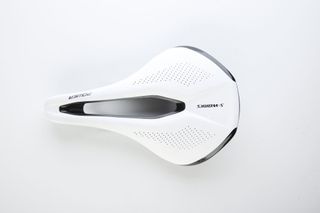
Cycling shorts come with a chamois which protects the rider by offering a layer of padding between the body and the saddle. However, chamois pads do vary - and different riders will get on with different brands.
- Best cheap cycling shorts under £70
- Best women’s bib shorts
- Best men’s bib shorts
If you're constantly feeling like your shorts are rubbing you up the wrong way, try another pair. It is important to make sure that they fit well - shorts that are too big will move around, often causing chafing, and shorts that are too small will dig in in all the wrong ways.
Use chamois cream
Chamois cream is not an essential item for all cyclists. Some riders find that with a good pair of short and the right saddle, they can completely forgo the messy stuff.

However, if you're prone to saddle sores, it's a really good idea to utilise this helpful aid.
Chamois creams contain anti-bacterial aids which will prevent germs from clustering and causing you problems, as well as soothing ingredients like Aloe Vera or Shea Butter. The viscosity of the cream also cuts down on chafing between your body and the chamois.
Wash your shorts after every wear
Cycling shorts are meant to be worn against the skin - so there should be no additional layer between your body and the chamois. No wearing underwear with cycling shorts. As a result, they should be washed just like underwear - after every outing. Not doing so allows bacteria a second chance to access your skin, which can cause infection.
By the same token, always aim to take your shorts off and shower straight after a ride - don't sit around in your shorts for hours afterwards.
Beware of hair removal
Cyclists are well known for shaving their legs - though there is still debate over whether this makes you faster. However, if you're giving yourself more intimate haircuts, then beware.
The hair around your genitals acts as a natural sweat soaker, and protective layer. Removing hair also means re-growth, and thus the risk of ingrown hairs and infection of the follicle.
Check your bike fit is right
A wonky saddle, saddle that's too high, or that's pointing upwards or downwards at a funny angle can lead to chafing. If you're getting saddle sores on a regular basis, check that your set up isn't contributing.
How to treat saddle sores
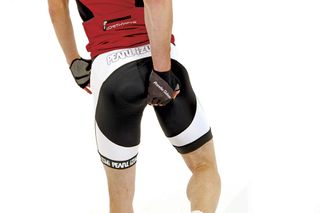
Following all the advice above will help you to avoid saddle sores, but no one is immune. If you've been struck down, follow these tips to help get rid...
Take a day or two off the bike
If you're struggling to get rid of a saddle sore, constantly re-exposing the area to the stimulus won't help. Take a little time off the bike, and wear loose, breathable clothing for the best chance of a quick recovery.
Keep the area clean and dry
Wash daily, ideally with a fragrance free soap, and pat the area dry. Don't try to pop, burst, squeeze or otherwise mess with saddle sores - just stay clean and dry and let your body do the rest.
Use an antibacterial cream
Sudocrem is a particularly popular option - used to treat nappy rash and other minor skin ailments, it's an antibacterial cream that you can pick up for a few quid at most good chemists. Spread a thin layer on the area and let it do its magic.
Know when to see your GP
Most saddle sores clean up within a couple of days. Really bad saddle sores can require medical attention. If you're having trouble sitting, walking, and the idea of sitting on a saddle is about as inviting to you as sprinting across a fire pit, then see your GP. They'll probably prescribe some antibiotics which will sort you out in no time.
Nutrition, rest and and saddle sores
Though most advice around avoiding saddle sores centres around getting the saddle, shorts and hygiene routine on point, diet and stress can play a role too.
Dr Tamsin Lewis has spent many hours in the saddle and treats athletes suffering from hormonal and nutritional problems at her London practice, she had a few suggestions on how to avoid saddle sores.
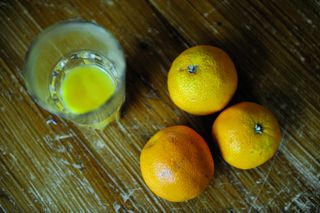
Lewis thinks good nutrition may help: “Good levels of vitamin C and zinc for collagen formation help skin maintain its barrier and plumpness.”
Zinc is lost through sweat, so (sweaty) cyclists need more from dietary sources. Lewis suggests hormone levels also affect healing: “Many endurance training women have imbalances in their female hormone levels, and low oestrogen is linked to impaired collagen formation.”
Poor recovery may exacerbate total body inflammation. “If you are skimping on sleep, if there is stress in your life and if diet is inadequate, then total body inflammation can be increased,” Lewis explains.
Consuming enough protein is also key to recovery; Lewis recommends 1.7-2g per kilogram of body weight on training days. Lots of vegetables will also help reduce inflammation: “Consider vegetables with added lemon or lime to encourage alkalinity.”
>>> Cycling sports drinks: hydration explained
On whether high-sugar diets from energy drinks contribute to inflammation, Lewis says: “The jury is still out. I think we should try to reduce our reliance on them and choose home-made versions to support energy.” It is difficult to go without refined carbohydrate, she says, when training levels are high.
Certain foods may cause inflammation in some people and not in others. Lewis advises: “Learn about what suits you and what doesn’t and eliminate foods which you feel cause gut symptoms, headaches, brain fog or sluggishness as these will be causing inflammation.”

Thank you for reading 20 articles this month* Join now for unlimited access
Enjoy your first month for just £1 / $1 / €1
*Read 5 free articles per month without a subscription

Join now for unlimited access
Try first month for just £1 / $1 / €1
Michelle Arthurs-Brennan the Editor of Cycling Weekly website. An NCTJ qualified traditional journalist by trade, Michelle began her career working for local newspapers. She's worked within the cycling industry since 2012, and joined the Cycling Weekly team in 2017, having previously been Editor at Total Women's Cycling. Prior to welcoming her daughter in 2022, Michelle raced on the road, track, and in time trials, and still rides as much as she can - albeit a fair proportion indoors, for now.
-
 'Ride like you own the road' - Zoe Bäckstedt on Paris-Roubaix Femmes, her Grand Tour debut and her new Red Bull helmet
'Ride like you own the road' - Zoe Bäckstedt on Paris-Roubaix Femmes, her Grand Tour debut and her new Red Bull helmetBäckstedt recently landed sponsorship from the energy drink giants and joined the likes of Tom Pidcock, Pauline Ferrand-Prévot and Evie Richards as a Red Bull athlete
By Tom Thewlis Published
-
 Stages Cycling lays off entire workforce, according to report
Stages Cycling lays off entire workforce, according to reportRenowned power meter brand appears to have ceased all operations
By Joe Baker Published